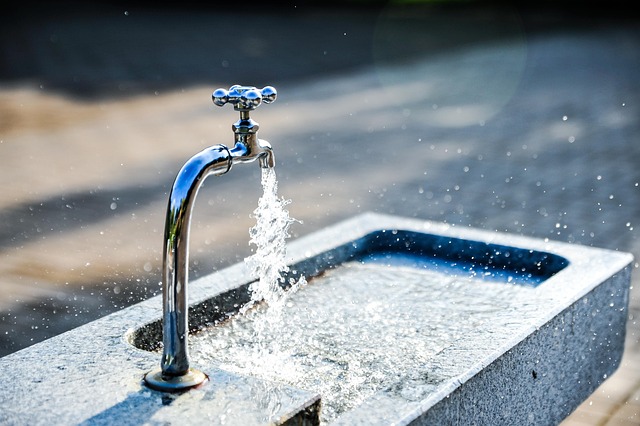
What Is the Europe Water Resilience Strategy 2025?
In June 2025, the European Commission unveiled one of its most ambitious environmental blueprints yet — the Europe Water Resilience Strategy 2025. The plan aims to keep the continent from tipping into a full-blown water crisis.
As discussed in the Europarl Radio episode From Scarcity to Security, this isn’t just another climate policy. It’s a full-scale mobilization — a new era of European water resilience initiatives that reach from city pipelines to rural aquifers.
Europe isn’t just patching leaks. It’s rethinking how water moves, how it’s valued, and who is responsible for keeping it flowing.
The new Europe water resilience strategy 2025 is more than infrastructure repair. It’s a coordinated response to climate pressure, aging systems, and political inertia.
Member states are now tasked with boosting water efficiency, cutting losses, and hardening supply systems against droughts and floods by 2030. The blueprint sets clear goals:
- Modernize leaky infrastructure
- Expand water reuse and circular water systems
- Increase public awareness and behavior change
The European water resilience initiatives stretch across every sector — from agriculture and energy to industry and homes. Without them, Europe risks turning its rivers and aquifers into slow-motion disasters.
Why Europe Needs a Water Resilience Strategy
Europe’s water problems are more than abstract environmental issues—they’re creeping into homes, farms, and energy systems.
Climate change is making droughts the new normal
Southern Europe — Spain, Italy, Greece — is already in crisis. Heatwaves are longer, rainfall shorter, and rivers drier. What were once “occasional shortages” are now permanent features of the climate map.
The Europarl podcast notes that these droughts are not only cutting crop yields but also threatening hydropower output and urban water security. Without coordinated action, southern basins could face water scarcity levels typical of the Middle East by mid-century.
Pollution is contaminating Europe’s drinking water systems
Europe’s rivers are absorbing everything — agricultural runoff, microplastics, PFAS, and industrial discharge. The result is contamination creeping silently into drinking water systems.
The strategy’s health dimension is clear: restoring natural water cycles in Europe isn’t just an environmental project — it’s a public health safeguard. Cleaner rivers mean safer taps and healthier communities.
Population growth and urban demand are stretching water supply
Cities are expanding faster than infrastructure can handle. More people means more taps, more wastewater, and more strain on already stressed aquifers.
Without reform, utilities could hit breaking points during the next major heatwave. That’s why the strategy doesn’t just focus on supply — it targets efficiency, reuse, and behavioral change at scale.
How the Strategy Will Restore and Protect Water Systems
Europe’s approach blends policy, investment, and innovation.
Restoring natural water cycles in Europe through nature-based solutions
The core of the Europe water resilience strategy 2025 is letting nature work again. The plan invests heavily in reforestation, wetland recovery, and soil management — natural systems that recharge aquifers, absorb floods, and filter pollution.
These actions reconnect rivers to their floodplains, slow runoff, and bring biodiversity back into balance. It’s not green nostalgia. It’s hydrology — using natural engineering to stabilize supply.
Upgrading Europe’s leaking infrastructure
Across the EU, outdated pipes waste billions of liters of treated water every year. The strategy pushes for full modernization — smart networks, pressure monitoring, and AI-driven maintenance.
The goal is twofold: stop the leaks and prevent future failures before they happen. For utilities, that means shifting from reactive repair to predictive management — a digital overhaul of Europe’s water backbone.
Expanding water reuse and circular water economies
Only a fraction of EU wastewater is reused today. The new plan prioritizes large-scale treatment for non-potable reuse in agriculture and industry.
From Spanish greenhouses to Dutch manufacturing plants, European water resilience initiatives are already proving that reuse isn’t a gimmick — it’s essential infrastructure. The strategy aims to make these projects the rule, not the exception.
What Innovations Can Support Water Resilience?
Technology is the secret weapon in this strategy.
Smart metering and early leak detection
Utilities are moving toward real-time water tracking with digital meters and sensors. These tools can identify leaks instantly, reduce waste, and map usage patterns during droughts. It’s the data layer that turns infrastructure into intelligence.
Advanced water treatment technologies ensuring cleaner water
Modern water resilience depends on purification. Electrochemical oxidation, membrane filtration, and nanotech-based treatment can strip out PFAS, microplastics, and heavy metals that conventional plants miss.
These systems are already being piloted in France, Germany, and the Netherlands — part of a broader European water resilience initiative to future-proof drinking water.
Data-driven water management and climate forecasting
AI and predictive analytics can forecast demand, anticipate droughts, and optimize water distribution. The podcast stresses that smarter management today means fewer disasters tomorrow.
Restoring natural water cycles in Europe, upgrading aging systems, and scaling smart technology are the pillars of the Europe water resilience strategy 2025. But ambition alone won’t secure the future. Success depends on political will, funding, and public action.
Europe’s water security is no longer guaranteed — it must be built, maintained, and defended.
If you work in water management, sustainability, or policy, now is the moment to act.
- Support pilot projects
- Adopt smart water technology
- Push for stronger conservation policy
- Back EU cooperation on water reuse
The blueprint exists. The tools are ready. The only question left is whether Europe will move fast enough to keep its rivers alive and its taps running.



